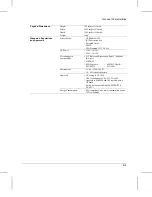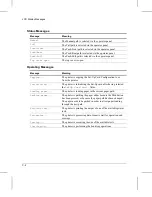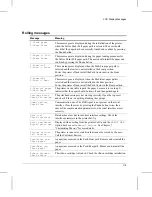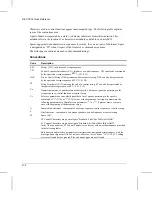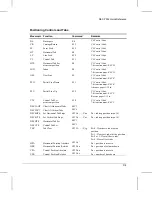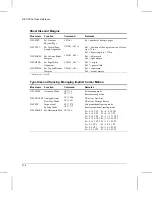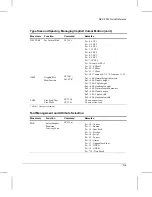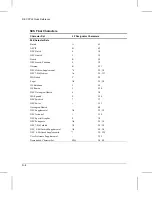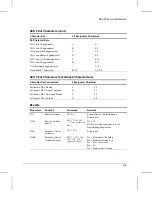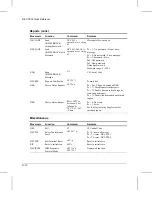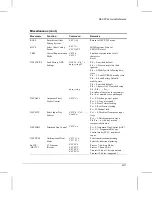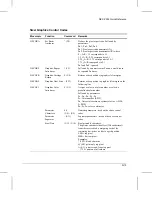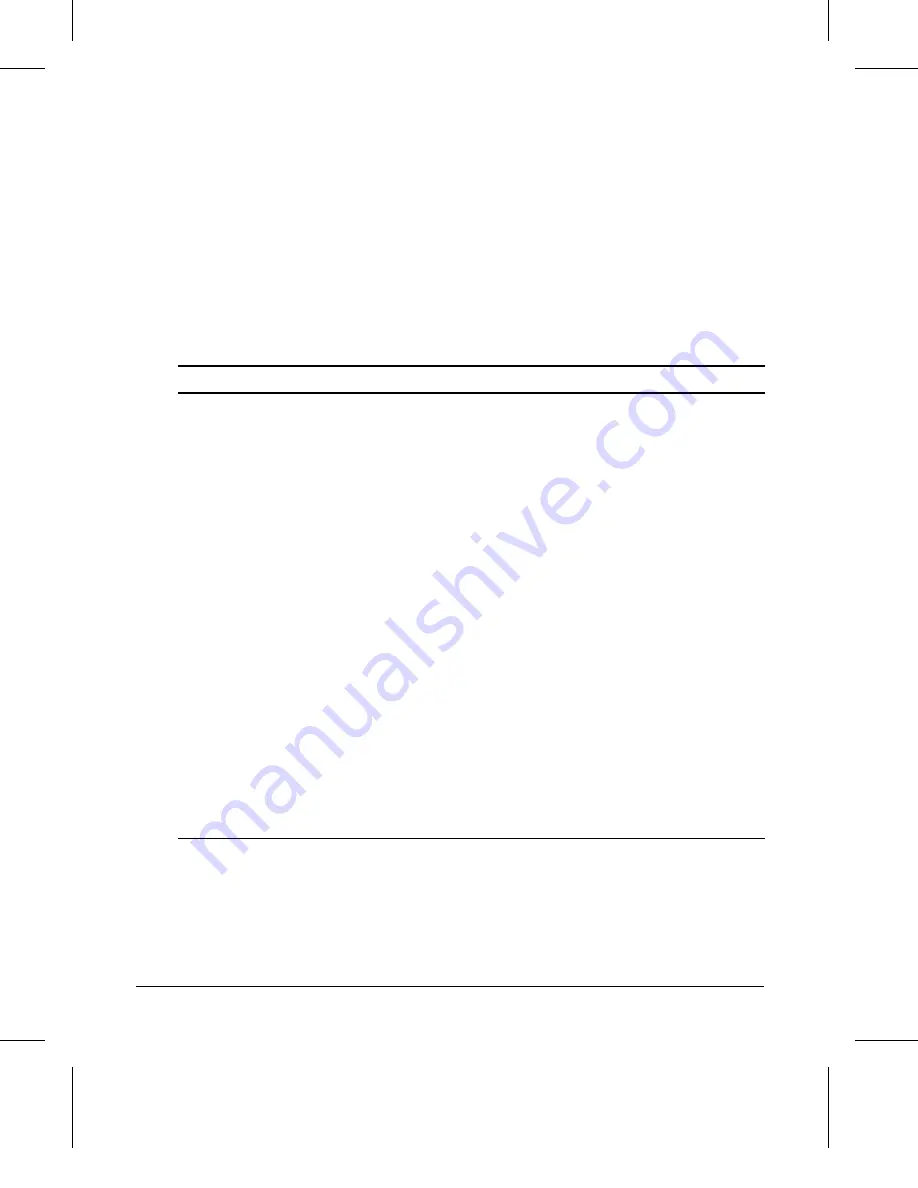
Characters used in control functions appear in monospaced type. The following table explains
some of the conventions used.
A pair of numbers separated by a slash (/) character indicates Column/Row notation. This
notation refers to the location of a character in a standard code table, such as ASCII.
Spaces appear between characters in sequences for clarity; they are not part of the format. Space
is designated as "SP" when it is part of the format of a command or sequence.
The following conventions are used in the command listings:
Conventions
Code
Description
ESC
Escape (1/11), introduces an escape sequence.
CSI
Control Sequence Introducer (9/11), intoduces a control sequence. CSI can also be represented
by the equivalent escape sequence ESC [ (1/11 5/11).
DCS
Device Control String (9/0), introduces a device control string. DCS can also be represented
by the equivalent escape sequence ESC P (1/11 5/0)
ST
String Terminator (9/12) indicates the end of a control string. ST can also be represented by
the equivalent escape sequence ESC \ (1/11 5/12).
Pn
Numeric parameter, or number of units that specify a distance or quantity pertaining to the
escape sequence, control function or control string.
Ps
Selective parameter, or one which identifies a list of options pertaining to the specific
command. If ">" (3/14) or "?" (3/15) occurs at the beginning of a string of parameters, the
following parameters are Digital private parameters. ">" or "?", if present must occur only
once at the beginning of the parameter string.
I
n
Intermediate character - component of an escape sequence, control sequence or control string.
F
Final character - component of an escape sequence, control sequence or control string
SP
Space (2/0)
C0 Control Characters are given in figure "Standard 8-bit Code Table (Left Half)".
C1 Control Characters are given in figure"Standard 8-bit Code Table (Right Half)".
In the 7-bit environment, C1 Control Characters can be sent with an escape sequence provided
in the following tables.
Both numeric and selective parameters are interpreted as unsigned decimal integers, with the
most significant digit sent first. For instance, the value 16 is coded as "16" (3/1 3/6). Leading
zeros are allowed but are ignored. Plus and minus signs are not allowed.
DEC PPL2 Quick Reference
D-2
Summary of Contents for LA400plus
Page 1: ...User Guide DIGITAL Matrix Printer LA400plus Order Number EK LA45E UG 001 1...
Page 2: ......
Page 37: ...Self Test Printout 31...
Page 44: ......
Page 56: ......
Page 58: ...7 8 9 0 d400 c03 1 2 3 4 5 6 d400 c02 d4003b20 Getting to Know Your Printer 2 2...
Page 179: ......
Page 183: ......
Page 191: ......
Page 199: ......
Page 233: ......
Page 253: ......
Page 259: ......
Page 267: ......
Page 276: ...Code MJK Code Page 869 Abicomp Brazilian ASCII Mazowian Bulgarian Character Sets G 9...
Page 277: ...Code Page 437 New Hebrew ISO 8859 7 ISO Latin 1T D Hebrew Character Sets G 10...
Page 278: ...IBM Character Set Tables IBM Character Set 1 IBM Character Set 2 Character Sets G 11...
Page 279: ...EPSON Character Set Tables USA France Germany United Kingdom Character Sets G 12...
Page 280: ...Denmark 1 Denmark 2 Sweden Italy Character Sets G 13...
Page 281: ...Japan Spain 1 Spain 2 Norway Character Sets G 14...
Page 282: ...Latin America Korea Turkey Legal Character Sets G 15...
Page 283: ...Old Hebrew Character Sets G 16...
Page 285: ......
Page 294: ...W Word length 6 20 Workload B 2 WRAP vs TRUNCATE Option 7 18...
Page 295: ......
Page 297: ......
Page 298: ......
Page 299: ...Printed in The Netherlands 1...






